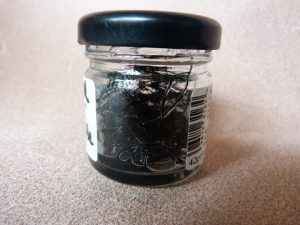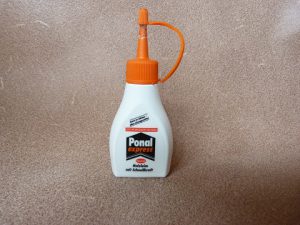You know the trouble you have when starting to print. You see the printer is up to temperature. You know the nozzle is clean, but still the first layer will just not stick. You check the z-axis, nope that is level, so what now?
This is where you need a little help. That help comes in the form of adhesion promoters for build platforms. This will allow a little more tolerance for the z-axis gap along with a slightly bowed heated build platform. So let’s have a look at them:
There are three main adhesion promoters used for 3d printing when printing pla.
Please read the important update at the bottom of this post
Which adhesion promoter for build platforms is best ?

Ordinary wood glue or polyvinyl acetate (PVA) – can be dissolved at a ratio of 4 to 10 parts of water to one of PVA glue. Applying a thin layer of this to the build platform and heating it will drive off the moisture leaving an invisible layer of PVA . When printing the first layer of PLA, the bond between the PVA and PLA is strong and allow a greater margin of error on the z-axis.
A lot of hairsprays contain the chemical polyvinylpyrrolidone(PVP) . This is used to stick layers of plywood together, and people spray this onto their hair!!
Due to the fact that this chemical is water soluble another polymer is added that will make the spray last longer, polydimethylsiloxane(PDMS)To allow the hairspray to come out of the can a solvent is added, some form of alcohol or hydrocarbon. This evaporates leaving a sticky layer of polymers.
To find hairsprays which have a good chance of working you need to look for the above chemical in the list of ingredients on the label.
I have just located a source of PVP – in home manufacturing of cosmetics. The other ingredient to try is VinylPyrrolidone (VP) and Vinyl Acetate (VA) copolymer – or Hairfix powder. Both of these are soluble in water and can be brushed onto the build platform. Available from Makingcosmetics.
Dissolved ABS
Adding scraps of ABS to acetone will disolve them, producing a slurry after 24 hours. This mixture can be wiped sparingly, with a paper towel, onto the build platform to add a very thin layer of abs for the PLA to stick to.
I have heard of people using vinegar, I tried white vinegar – maybe a mistake as this is purified vinegar. Maybe people used standard vinegar with the water boiling off leaving a sticky residue for the PLA to stick to. But when I tried the distilled vinegar it made no difference.

What I have been using recently is bits of PLA in acetone, wiping this over the print bed when it is getting warm. I know PLA does not dissolve in acetone but it does change its properties. This does seem to make a difference or maybe it’s cleaning the surface just before printing.
With all of these techniques you must ensure that the build platform is clean before you start to use it, or add the adhesion promoter. So check out this post for ideas on how to clean your build platform.
If you have had success or failures with the above adhesion promoters for build platforms please let us know how you got on for us all to benefit.
Thanks for reading
Phil
Please take note of this – it is a tragic accident which could have been avoided
If the post has gone – this is an outline – a 17 year old unfortunately died after using hairspray to stick his prints down to the build platform. He had used 3 tins, after seeing the technique on a YouTube video. With the build up of propellant a spark ignited the gases. Flash paper – used in the magic business caught fire and tragically the young lad was overcome with fumes before he could escape.
I feel sorry for the family, my thoughts and wishes go out to them.
Please ensure if you are using this technique as an Adhesion Promoters for Build Platforms, to use it sparingly and in a well ventilated area.

